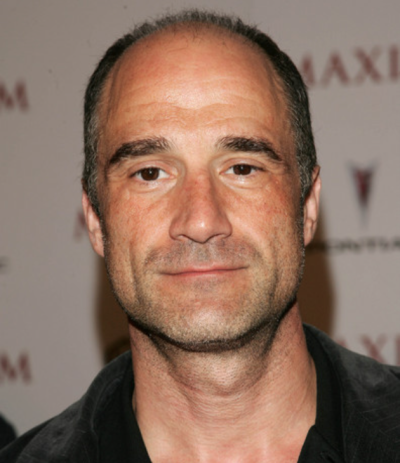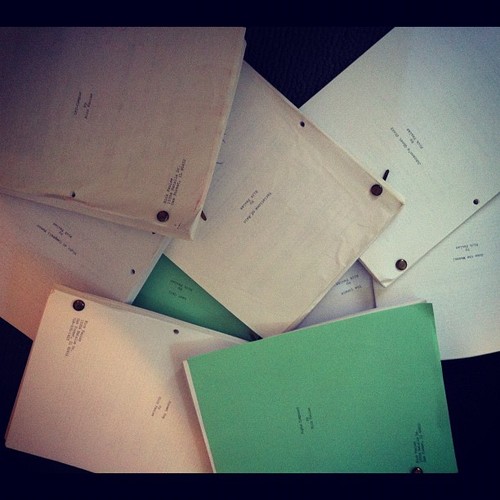The fact that the two scripts I reviewed this week both took major chances got me thinking – How the hell do you take chances in a screenplay? What’s the protocol?
Before we get to that, we must first establish what “not taking a chance” looks like. Believe it or not, it’s possible to write a good movie without taking chances. Rocky’s a straight-forward underdog-rises-to-fame movie. And it’s pretty damn good. The same could be said for straight-forward flicks John Wick, Finding Nemo, and Neighbors.
But more often than not, not taking chances leads to scripts that feel safe, sterile, boring, and worst of all: PREDICTABLE. Office Christmas Party. Assassin’s Creed. Jurassic World. These are all predictable movies that didn’t take any chances.
I’ve found that chances can be broken down into two categories: Before and during. There’s the chance you take in conceiving the idea and the chances you take within the screenplay itself. We’re going to explore both today.
I should also point out that not every chance you take will be good. With chances come risk. And, to be honest, I’d say most chances don’t pan out. However, when you take a big risk and it works? It’s the difference between your script being awesome or forgettable.
In analyzing chances, I’ve noticed a trend. Good chances are unexpected but work because they feel like part of a bigger plan. Bad chances are likewise unexpected but don’t work because they were created for the wrong reasons – as gimmicks or tricks used to shock the audience. They rarely have the bigger picture in mind.
For example, in the short movie, Fool’s Day, a group of 4th graders accidentally blow up the head of their teacher. It’s a HUGE CHANCE. I mean, it had never been done in any movie before. But there was clearly a plan afterwards. The movie becomes about covering up the crime. If you look at Will Smith’s, Hancock, however, the revelation that Charlize Theron’s character is also a superhero comes out of nowhere and doesn’t fit into the rest of the story thematically or narratively. That’s a chance that was designed for the wrong reasons.
With that in mind, let’s look at 10 ways you can take chances in your writing.
1) CONCEPT
The biggest chance you can take in a script is in the concept itself because the concept affects everything that comes after it. Taking a chance with your concept means giving us something unconventional that has never been done before. Swiss Army Man, Passengers, Colossal, Being John Malkovich. Be brave, be different, be daring.
2) HEAVY TONAL SHIFTS
It’s mega-dangerous to shift tones during a screenplay because you risk looking like you’re unsure what your movie is about. It often looks sloppy. However, it does make your movie unique. The Netflix film, Okja, shifts between a serious drama, an intense action film, and a kooky comedy. Indeed, it feels unlike any other film out there.
3) PLOT REBOOTING
Plot rebooting is when the story starts off about one thing, then at some point during the script, it reboots so it’s now about something else, and maybe even reboots again so it’s about something else. Monday’s script, Courage, was a rebooter. It was about living in a future city protected from aliens. Then it was about being chased by aliens in space. Then it was about the making of a 1970s science-fiction film. I didn’t like the script but holy shit did the writer take chances.
4) MAJOR TWISTS THAT CHANGE THE STORY
One of the most well-known chances you can take as a writer is introducing a big twist after the first act. It’s when this twist changes the nature of the story itself that it’s the most impactful. Psycho (the main character is killed and replaced by the villain). Allied (the woman the hero married turns out to be a German spy). Gone Girl (the wife faked her demise to incriminate her husband). The reason this is so risky is that you’re often changing the nature of what drew the audience in in the first place. It’s like playing a song everyone loves then stopping it and saying, “But wait, I have a song that’s even better!”
5) PLAY AGAINST THE CHARACTER
This is a chance I wish more writers would take. Basically, it’s taking a character archetype we all know well – the roguish Han Solo, for example – and playing it in a completely different way. A Godfather-like mob boss who’s effeminate, for example. Or a Die-Hard like action hero who’s neurotic, which is kind of what they did in The Accountant. A wisecracking superhero (Deadpool). An underrated version of this is what they did in The Intern. That movie was set up to have DeNiro’s aging intern play the zany “ZOINKS! WHAT’S SNAPCHAT??” role. But instead the character was played more intelligently, picking up his duties quickly and being more of a fatherly presence to the employees. If your character is being played exactly like these types of characters have always been played, you’re probably boring the audience.
6) ZERO CONCERN FOR COMMERCIAL APPEAL
This is one of the biggest chances you can take, completely ignoring commercial appeal. Look no further than the Coen Brothers, who do this often. A movie about a failed folk singer who loses a cat. Fitness trainers who get mixed up in a CIA plot. A 1930s treasure-seeking musical. Just here on Scriptshadow I reviewed the now infamous Eskimo period piece script that includes an old woman giving a 12 year old boy a handjob. The great thing about not giving a shit about commercial appeal is you can write without having to worry about what audiences will think. But buyer beware. This is one of the riskiest routes you can take!
7) PUSHING BOUNDARIES
If you really want to push yourself, write about the stuff you don’t want people to know you think about. Push the boundaries of what is acceptable. We’ve seen this in movies like Deliverance and Straw Dogs, but boundary-pushing can include race, violence, murder, pedophilia, cannibalism, and plenty more. Ideally, you don’t want to push boundaries just to push them. You want it to be an organic part of your story. Check out the French film “Raw” to see the latest movie to receive a lot of press for pushing boundaries.
8) PLAYING WITH TIME
One of the most common ways to take chances is through playing with time. From Memento to Edge of Tomorrow to 500 Days of Summer to Eternal Sunshine to this weekend’s Dunkirk, playing with time rearranges the narrative in an unconventional way that almost universally leads to an unpredictable story. And since the whole purpose of taking chances is to give the viewer something they haven’t experienced before, this is a time-honored way to do so.
9) PLAY AGAINST THE GENRE
Playing against the genre is similar to playing against a character, however it affects more of the story. A recent example of this is Sausage Party, an R-rated animated film about food that gets slaughtered. Not what you expect when you walk into a cartoon! On the script side is Brian Duffield’s, “Vivian Hasn’t Been Herself Lately.” The genre is technically “Possession.” But it isn’t played like any conventional possession film. Instead, the story is an intense drama about a failing marriage, a totally unexpected choice. You can see how this would open up all sorts of unique avenues as a writer. A Western that’s actually a romantic comedy. A musical that’s actual a zombie film. Some huge chances can be taken here.
10) GOING AGAINST CONVENTION
Every time you write a fifteen minute scene, you’re taking a chance. Every time you write a script that takes place in a single location, you’re taking a chance. Every time you ignore the 3-act structure, you take a chance. Every time you make your main character an unlikable asshole, you take a chance. Every time you change theme mid-script, you take a chance. Every time you go off on a non-sequitur subplot, you take a chance. I watched Personal Shopper recently. It starts off as a supernatural drama about a girl trying to make contact with her dead brother. It later evolves into a texting thriller with a mysterious person texting our heroine throughout the second half of the movie. Later still, it turns into a murder-mystery. These convention-busting choices are available to you. But like every artistic choice, they come with the risk of people saying, “What the fuck were you thinking there?” So make sure you have a reason for making the choice.
I’ll finish by saying taking chances boils down to giving the audience the unexpected. If your entire script goes as expected, it’s probably not going to be very memorable.
Carson does feature screenplay consultations, TV Pilot Consultations, and logline consultations, which go for $25 a piece of 5 for $75. You get a 1-10 rating, a 200-word evaluation, and a rewrite of the logline. If you’re interested in any sort of consultation package, e-mail Carsonreeves1@gmail.com with the subject line: CONSULTATION. Don’t start writing a script or sending a script out blind. Let Scriptshadow help you get it in shape first!
Genre: Thriller/Drama
Premise: (from Black List) After negligently killing a hunter with their patrol car, an alcoholic Sheriff’s Deputy and her superior officer must decide what to do with the only witness to their crime – a death row inmate only days from execution.
About: Today’s script double-dipped into Script Paradise finishing on the 2015 Black List with 11 votes AND winning a 2015 Nicholl Fellowship. It is the breakthrough screenplay for Andy Friedhof.
Writer: Andy Friedhof
Details: 116 pages (Oct. 2014 draft)
Yesterday, someone in the comments section said (paraphrasing): “I don’t get it Carson. This script sold and yet the entire review is about how it’s not good. Shouldn’t you be telling us why the script sold?”
Over the years, I’ve learned that you don’t know for sure why a script sold unless you talk to the production company that bought it. For example, a lot of script purchases come through relationships between the company and the writer. Often what will happen is a prodco and a writer will spitball ideas, the prodco will say, “Hmm, that’s something we’d like to make,” – the writer will then write it on spec, and the prodco will then buy it – EVEN THOUGH THE SCRIPT ISN’T IN GREAT SHAPE YET.
To someone judging that script on merit alone, the sale will be confusing. “That script wasn’t very good,” they’ll say. What they don’t know is that the prodco wants to make that movie and will therefore continue to develop the script until it’s at a place that they like.
This is why I like the Black List. For all of its weaknesses, it’s still a system where I know it wasn’t just one guy at a production company who endorsed the screenplay. It’s 10, 15, 20, 30 people. That consensus usually (not always, but usually) means you’re going to read a quality script.
And not only did today’s script impress 11 industry vets, it also beat out 7000 other screenplays to win the Nicholl. Let’s see what this puppy is all about!
Sergeant Stan Gittany is in his 50s and bitter as fuck. While no one else would agree with him, Stan believes he’s awesome. And he’s pissed off he’s been passed over again and again in life, leaving him as some second rate Sheriff wannabe, teamed up with wet blanket deputies like 30-something Josie Deumann.
That said, Stan’s got a fairly big job tonight. He and Josie are transporting convicted killer Bernie Houle – a Chippewa Indian who’s looked at by most as a dangerous lunatic – to the jail where he’s going to be executed in three days.
During the late night drive, Stan and Bernie get into an argument, causing him to lose focus and hit a hunter crossing the road. Stan and Josie freak out, thinking they’ll get at least two years for vehicular homicide if anyone finds out about this.
But the real complication is that Bernie saw the whole thing. Even if they ditch the hunter’s body, Bernie will squeal the second they get to jail. So Stan comes up with a plan. Ditch the hunter’s body. Then hide Bernie at Kyle’s cabin (Josie’s brother) and tell the authorities he escaped when they hit a deer.
Sheriff Tom Docherty comes in and immediately orders a manhunt for the “escaped” Bernie while Stan, Josie, and Kyle try and figure out what to do with killer. Then Stan comes up with an idea. What if they executed him here? In the cabin? The same time, same manner, same drugs – They simply become the executioners.
The other two aren’t into it but they figure as long as it gets this problem out of the way, so be it. It will now be up to Sheriff Docherty to discover the ruse and get to the cabin in time before our culprits can become the world’s first independent Death Row.
I really liked this setup.
One of the things you’re constantly looking for as a reader is when writers elevate or evolve common setups.
Great Falls could’ve easily been two cops in a car who hit a hunter and try to get away with it. By adding this wild-card third variable – a killer on the way to be executed – it adds an entirely new dynamic to the story. It’s the “strange attractor,” we always talk about that makes the script unlike anything else out there.
So at this point, I was all in. A ticking-clock thriller where three people must figure out what to do with a notoriously dangerous killer. Setups don’t get much better than that.
However, Friedhof then makes an unexpected choice.
He ditches the thriller angle to focus on the moral one. Namely – Do human beings have the right to kill other human beings?
This is a fascinating question that could be debated ad nausea. I’ve had many arguments about it with friends over the years.
But DRAMATICALLY, the choice is risky. You’re asking the audience to hope three people are stopped before they’re able to put down a murderer. And not just any murderer, a convicted murderer who’s been scheduled to die on that day anyway.
Let me make this clear. If this were real life, I’d have conflicted feelings over this. But this isn’t real life. It’s a movie. And in a movie, things need to work DRAMATICALLY. Dramatically speaking, why do I care whether a terrible man is saved or not? You have to give me a reason to want him to be saved.
However, the thing about Great Falls is it never stops changing. It’s like a cell that keeps mutating. Just when I set myself up for THAT storyline, the execution is botched, Stan is eliminated from the picture, and now it’s just Josie, Kyle, and Bernie who are left. And there’s still 40 pages to go. What now??
If Great Falls has a strength, that would be it. YOU. DON’T. KNOW. WHAT’S. COMING. NEXT. Every time I was like, “Oh, it’s THAT kind of movie,” it would turn into another kind of movie.
Its other big strength is why it won the Nicholl. There’s character development up the wazoo (the Nicholl loves itself some character development!). Josie’s got a dementia-ridden mother she doesn’t have time to take care of. Kyle was in prison for six years for stealing cars. Stan’s been passed over all his life for being a screw-up.
Great characters are characters who are unsettled inside. They’re battling something, whether it be something in the past (a mistake they made), the present (an addiction they can’t kick), the future (how do they take care of their family if that pension doesn’t come through). A character who’s at peace with himself is not an interesting character.
When you scoop that up and smother it on top of an original plot like this one, you’re going to get contests excited. My excitement, however, kept vacillating back and forth. I’d love this script, then lose interest, then love it again, then lose interest. I’m still not sure if all the pieces come together but I’ll say this – it’s an incredibly original read. If you like not knowing what’s coming next, Great Falls is for you.
[ ] What the hell did I just read?
[ ] wasn’t for me
[x] worth the read
[ ] impressive
[ ] genius
What I learned: So you know how I said above “a character who’s a peace with himself is not an interesting character?” Bernie was the one character in Great Falls at peace with himself. And guess who was the weakest character? Bernie. He admitted to his crime. He seemed relaxed the whole story. I believe this script can jump to the next level if Bernie is more of a wild-card. In this draft, he’s way too passive.
This might be the craziest sci-fi script I’ve ever read.
Genre: Sci-fi
Premise: In a future where oceans have risen and mind-controlling aliens have taken over, a psychiatrist fights to save his family, a task that gets progressively harder when he realizes that nothing is as it seems.
About: This is a rarity these days. A big sci-fi spec sale. It comes from the writer of Oblivion, which was a cool flick that could’ve been awesome if it had a bigger sandbox to play in.
Writer: Karl Gajdusek
Details: 121 pages (8/24/16 draft)
Yaaaay!
I’m in sci-fi heaven. Not only do I get Valerian in three days but I also get to read a big sci-fi spec sale today!
And for all you Valerian pre-haters, let me just say… uh, 68% Rotten Tomatoes!
What now?
Mic drop.
BOGHHHSHAFSSHSH! (explosion sound)
Valerian for life.
Valerian is actually the appropriate movie to be talking about in regards to Courage because both screenplays appear to be batshit crazy. But could Courage actually be crazier?
Courage opens up in a future Chicago that seems to be run like 1960s East Germany. People walk around in colorless clothes, don’t look each other in the eye, and signs like, “Remember. Two is a conversation. Three is a conspiracy,” are posted everywhere.
Jake Phobetor is a psychiatrist with a dying marriage trying to help people get through these troubling times, and after a few scenes, we learn just how troubling those times are. Chicago, it turns out, is encased in a giant glass dome that keeps out the swelling oceans which have risen due to the melting of the ice caps.
And, oh yeah, there are giant sea aliens known as the “Talis” trying to break in so they can kill everybody. Which is why there is an “Ark” spaceship that everyone’s trying to win the lottery to get on. Jake knows he’s not going to be picked, but he rigs the system to get his 8 year old son, Tash, on.
Right when they get to the ship, however, the dome breaks, and a 100 foot wall of water shoots at them. Too late for Jake and his son. Except that we CUT TO BLACK and Jake wakes up in a cryo chamber on that Ark 2 years later.
What Jake learns is that he was dreaming. Well, sort of. The Talis are real, but he and his family escaped. The reason Jake is being woken up now is because the Talis are on their tale. Their ship chased the Ark and have finally caught up. The woman who woke up Jake needs his help to pull a maneuver that will destroy the approaching Talisians.
Jake has no idea what’s going on but does the best he can, only to black out and wake up… AGAIN. Except this time he’s on a 1976 science-fiction movie set and he’s the star of the movie. It turns out that the science-fiction story wasn’t real. He’s just playing a part. Or is he?
Jake, convinced that his family is still in danger, convinces the writer to tell him how to save his wife and son, then goes back into the Ark ship to finish what he started.
One of the most important qualities a writer can have is the courage to TAKE CHANCES. If you’re not taking chances somewhere, your writing isn’t going to be very compelling.
When I used to compete in tennis, the thing that often separated the good players from the great ones was fearlessness, the ability to let loose and take chances. Go for an inside-out forehand winner when you’re down match point instead of gently pushing the ball back and hoping the other guy makes a mistake.
But here’s the thing about letting loose and ripping forehands. They don’t always go in.
And as much as I admire the hell out of this screenplay, I don’t think it lands inside the court.
It’s just too freaking crazy.
Don’t get me wrong. I was rooting for it. You guys know me and sci-fi. I’m dying for the next great sci-fi movie that’s not one of these studio assembly line doohickies. But if I’m being a fair chair umpire, I have to be honest and say this one was “out.”
In attempting to figure out where the script lost me, I’d have to say when we showed up on a movie set. As a writer, you want to be aware of the audience’s expectation. Once you set an expectation, you don’t want to betray that. In other words, you don’t want to promise an intense drama and then when people show up to see your movie, give them a romantic comedy. They’re going to be disappointed.
And this script is set up as heavy imaginative alien science-fiction. That’s the expectation I’m working with. So when we then end up on a 1976 science-fiction film set? I’m like, hmmmm. This is a huge tonal and subject matter shift. As much as I was trying to, I couldn’t get on board with it.
And that’s too bad because, structurally, the script is pretty sound. It utilizes a mystery approach in the beginning. We’re living in this strange city with strange rules and we’re trying to catch up with what’s going on. Then, right when we do, we’re thrust into this race to escape the chaos. And that’s followed by us waking up on the ship and needing to take out an imminent alien attack. So we move from mystery (what’s going on?) to a goal (get my son out on the Ark) to urgency (hurry and kill the approaching alien ship) through the first half of the screenplay and it’s all good.
But when the movie set arrives, we switch from the intensity of a man trying to save his family to problems like: How tough it is to be a movie star. It’s too radical a shift, way lower stakes, and, quite frankly, not as interesting.
Now we do jump back into Jake’s pursuit to save his family but something about knowing this is all tied to a fake movie production lessens the desire to see Jake succeed.
Also, there’s too much going on here. One of the temptations of science-fiction is to go nuts. Is to include every wild idea you have. But when there’s already a lot going on, adding more eventually leads to the law of diminishing returns.
For example, a lot of time is spent early on setting up this idea that not only are these sea aliens attempting to break through the water bubble dome, but they also have some mind-melding power where they can telepathically destroy your brain so you’re a vegetable. Even more time is put into explaining that this takes extra energy from the aliens and it will take them longer to break through the dome as long as they keep trying to destroy random human brains…
But ultimately, it’s not important. The more pressing story is a guy trying to save his family amidst an alien attack. That’s what the audience is emotionally attached to and therefore things like mind-melding brain attacks are distractions. The point is, you want to be creative and have fun in your sci-fi universe. But at a certain point you have to say, “This is the cut off point. I’m not going to keep adding more shit.”
And hey, I’m not going to pretend like it’s easy to know where that line is. It’s often a feel thing. But my recommendation to all sci-fi writers out there, is “When in doubt, cut it out.” I’m telling you, you’re going to reap the most benefits from keeping your sci-fi story as simple as possible.
With all that said, I give Gudjesek credit. This is unlike ANYTHING I’ve read all year. If you like weird sci-fi and like to be surprised, you’ll definitely want to check Courage out. I just think it’s trying to juggle too many balls at once. And for that reason, it wasn’t for me.
[ ] What the hell did I just read?
[x] wasn’t for me
[ ] worth the read
[ ] impressive
[ ] genius
What I learned: Improve upon sci-fi tropes – A great way to up your sci-fi game is to take a sci-fi trope and ELEVATE IT TO THE NEXT LEVEL. For example, in Courage, we have a city under a dome. We’ve seen that, right? However, Gajdusek one-ups the trope by melting the polar ice caps and having 100 feet of water on all sides of the dome. I’d never seen that before. It’s these things that give your sci-fi script a unique feel.
We live in a Narrative Society. We need NARRATIVES to help us understand the world. If something doesn’t fit into a narrative, it’s so confusing to us that we discard it – throw it in the trash bin so we don’t have to consider what it means. How dare the world be messy. It must be clear! It must be clean!
This weekend’s box office is the perfect example of a confused narrative. Last week we had the Hollywood darling, Spider-Man: Homecoming, winning the weekend in triumphant fashion. The film also received a stellar endorsement from critics, with a 92% Rotten Tomato score. That typically means good word-of-mouth and strong box-office holds.
But Spider-Man dipped a full 61% from last weekend to this, which is closer to a Transformers film than a well-received comic-book movie. For example, Wonder Woman only dipped 43%!
Now, normally when this happens, it’s because some behemoth of a movie came along and stole away all of the film’s box office. But that wasn’t the case. The weekend’s big new entry, War of the Planet of the Apes, only took in 56 million bucks.
What’s funny about that is that it ALSO doesn’t fit into a narrative. As much as everyone wants to say what a triumph this is, the reality is that the last Apes film brought in 72 million dollars its opening weekend. So this is a huge dip.
This leaves us with a very confused weekend where nobody knows how to summarize it. “Um, Apes beat Spider-Man! Even though it… um… did a lot worse than the previous Apes.” What’s the angle here? No idea. Sometimes box office results don’t fit into a narrative and that’s fine.
Meanwhile, I am SO PUMPED for Valerian. Both from a creative and business point of view, this movie is fascinating. It’s the biggest independent production ever, so it didn’t need to adhere to any studio notes. For that reason, it should feel unlike any big movie Hollywood has released.
However, I was also talking to someone who once worked with Luc Besson and they said that Besson is used to getting no notes on his scripts. He writes them and whatever he comes up with, that’s the movie. While that works with Taken-like movies, this is a big sprawling epic adventure where the screenplay will be key. And, from what I’m hearing, that screenplay is kind of a mess. Just goes to show how important feedback is! With that said, I can’t wait to see the film. Good, bad, or ugly, it’s going to be a unique experience.
And if it wasn’t cool enough that we get something from one visionary director next weekend, we’ve also got A NEW CHRISTOPHER NOLAN FLICK to watch! I mean, does it get any better? Luc Besson and Christopher Nolan in the same weekend. This may be the first double-feature I’ve done in over a decade. I’m probably going to review the movies back to back next Monday and Tuesday. I can’t wait.
Meanwhile, another big movie news story is that Disney just held their annual D23 convention or whatever it is. And something… really horrifying came out of it. I’m talking about this Wrinkle in Time trailer. Uhhhhh, what is going on here? This looks like the worst movie ever. I have to admit that I don’t know much about the source material. I suppose if it’s meant for kids between the ages of 4-6, it’s fine. But if this is made for anyone older than 7, it’s in a lot of trouble. Wow. Oprah. I mean. No.
And what’s up with Star Wars! They showed another one of those pseudo-behind-the-scenes movie trailers of The Last Jedi. I’m having a hard time getting up for this one, guys. There were a couple of cool aliens in there. But I was already swindled when the Rogue One behind-the-scenes trailer promised Snow Monkey as a featured character only for him to get 10 seconds in the final film. I wanted more Snow Monkey!
They’re going to need a marketing angle here to get people excited. This movie is feeling very bland. Maybe get in touch with Connor McGregor. He knows how to sell an event. With that said, at least the director didn’t get fired from this one. That’s got to be an endorsement, right?
All I do with every free minute I have is watch McGregor-Mayweather press conferences, then the post press-conferences of those press conferences. And then the reactions of people to those press conferences. I’m telling you right now – somebody’s going to make a movie about this some day. It might as well be you.
Here’s how to play Amateur Offerings if you haven’t played before: Read as many of this weekend’s scripts as you can and VOTE for your favorite in the comments section. Winner gets a review next Friday.
If you’d like to submit your own script to compete on Amateur Offerings, send a PDF of your script to carsonreeves3@gmail.com with the title, genre, logline, and why you think your script should get a shot.
Title: The Last Moon
Genre: Supernatural Horror
Logline: On the night of a full moon a man reveals to his brother he was attacked by a werewolf on a business trip to Vancouver and is now cursed. It might be the ranting of a madman, but as doubt creeps in and midnight approaches the brothers’ reunion takes a disturbing turn. A chilling thriller in the vein of 10 CLOVERFIELD LANE but with a supernatural twist.
Why You Should Read: I wrote this very contained script so I could produce/direct as per Carson’s advice about the best way to get your career going. I believe there is also, as per Carson’s advice!, a human condition aspect to the story amidst its thriller/horror genre, or at least I intend there to be. It’s a werewolf story but my goal here was not to write/produce a gory b-movie, instead I asked myself the question what might a Hitchcock or Polanski micro-budget werewolf movie be like? So more psychological-suspense genre than action/gore horror was the intention, also taking that route so the film can be made on a micro-budget. I also created a mock-poster to get things going as I am determined to produce/direct The Last Moon in the fall and want to make the script as good as it can be before then so any feedback I get should I be selected would be invaluable to the development process. I read the site every day so I look forward to seeing the other submissions regardless of the fate of mine so good luck to all.
Title: Hellpig
Genre: Horror/Comedy
Logline: When pipeline construction encroaches on its pristine Dakota Badlands territory, a giant prehistoric pig creature unleashes hell on a group of unsuspecting humans, who must band together in order to survive.
Why You Should Read: Longtime SS lurker here, ready to throw my script into the pit. Hellpig is a heapin’ helpin’ of action, gore and camp with a Sharknado tone, a unique monster and buckets of blood. Thanks to Carson and everyone for the opportunity and the reads.
Carson Bonus: 5 Scriptshadow Points for the best “Hellpig” poster tagline!!
Title: Margot
Genre: Psychological/Supernatural Horror
Logline: “A troubled teenage girl discovers a diary that links her to a beautiful socialite from over 200 years ago who represents everything she is not and everything she will do anything to be.”
Why You Should Read: My name is Thomas Mann (no relation to the German master, unfortunately!). I’m 25 and from the UK. Over the last couple of years I’e placed in the Top 20 of Launching Pad contest, quarter finals of Screencraft Horror, semifinals of Screencraft Family Friend contest and finalist of the BBC Writersroom. — You should give this script a read as it looks into some of the most current themes effecting the youth of today. It shows how easily manipulated kids are and the razor wire they walk during the tumultuous teenage years. Also, it’s fucking scary and has massive franchise potential.
Title: Star Crossed
Genre: Sci-fi/Fantasy
Logline: A young couple wish upon a falling star, then must save themselves and their families, from the alien creatures that fell to earth aboard the meteor they wished upon.
Why You Should Read: My name’s Sal. I’ve been posting on Script Shadow for about three years now (not all under my government name). I’ve been sitting on the Amateur Weekend sidelines for a good long while now, talking all types off stuff, so this is my bid to get off the sidelines and onto the playing field. — This is a genre take on Romeo and Juliet that I doubt anybody asked for, but felt compelled to write anyway. It runs the two teens at the heart of the story through a crazy night, filled with actions and emotions that bridge the above listed genres and more. There is also a definite surprise or two in store. And most importantly, the story is faithful to the spirit at the heart of the premise. It’s a story about love and family. If the title and logline strike you as even remotely interesting…give it a whirl.











